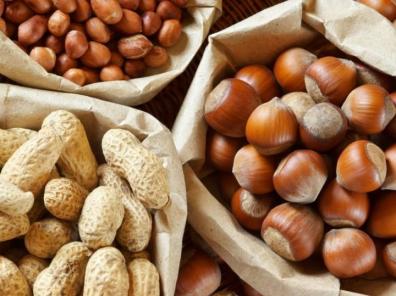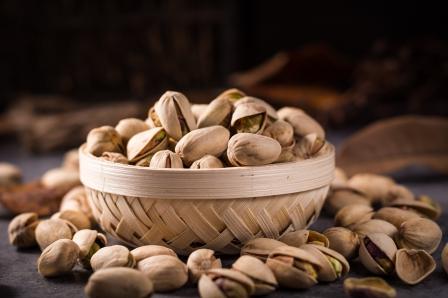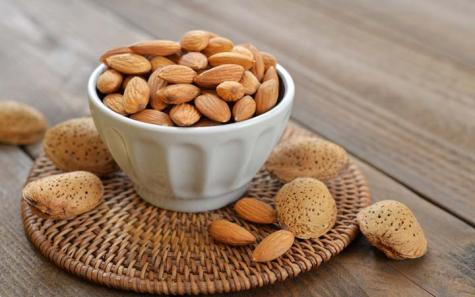Cob nuts, also known as hazelnuts, filberts, or simply wild hazels, are a delightful and versatile nut that has been enjoyed for centuries. From its origins in Europe to its various culinary uses and remarkable health benefits, cob nuts are a truly fascinating and nutritious nut that deserves more attention. In this comprehensive guide, we will delve into the world of cob nuts, exploring their history, uses, nutritional profile, and much more. **History and Origins of Cob Nuts:** Cob nuts have a rich history that dates back thousands of years. Originating in Europe, cob nuts were a staple food for many ancient civilizations. The cultivation of cob nut trees can be traced back to the Roman and Greek empires, where they were prized for their delicious flavor and nutritional value. Over time, cob nuts spread to other parts of the world, including North America and Asia, where they continue to be enjoyed to this day.
.
**Characteristics and Varieties of Cob Nuts:** Cob nuts belong to the Corylus avellana species and are part of the Betulaceae family. They are small, round nuts encased in a hard, woody shell, which is often covered by a husk or green outer shell. There are several varieties of cob nuts, including the Kent cob, the Barcelona cob, and the Ennis cob, each with its own unique flavor profile and characteristics. Some varieties of cob nuts are known for their rich, sweet flavor, while others have a more subtle and nutty taste. **Culinary Uses of Cob Nuts:** Cob nuts are incredibly versatile in the kitchen and can be used in a wide variety of dishes. They can be enjoyed raw as a healthy snack, roasted and salted for a flavorful treat, or ground into a fine powder for baking. Cob nuts are a popular ingredient in many desserts, such as cakes, cookies, and pastries, thanks to their unique flavor and crunchy texture. They can also be used in savory dishes, such as salads, stir-fries, and nut roasts, adding a delicious nutty flavor to the dish. **Nutritional Profile of Cob Nuts:** Cob nuts are not only delicious but also packed with essential nutrients that are beneficial for health. They are a good source of healthy fats, protein, fiber, vitamins, and minerals. Cob nuts are particularly rich in monounsaturated fats, which are heart-healthy and can help reduce the risk of cardiovascular diseases. They also contain antioxidants, such as vitamin E, which can help protect the body from oxidative stress and inflammation. **Health Benefits of Cob Nuts:** In addition to being a nutritious snack, cob nuts offer a range of health benefits. They can help improve heart health by lowering cholesterol levels and reducing the risk of heart disease.
..
The high fiber content in cob nuts can aid in digestion and promote gut health. Cob nuts are also a good source of plant-based protein, making them an excellent option for vegetarians and vegans looking to increase their protein intake. Furthermore, the vitamins and minerals in cob nuts, such as vitamin E, magnesium, and potassium, can support overall health and well-being. **How to Incorporate Cob Nuts Into Your Diet:** There are endless possibilities when it comes to incorporating cob nuts into your diet. You can sprinkle them on top of salads for extra crunch, add them to trail mix for a nutritious on-the-go snack, or blend them into a smoothie for a creamy texture. Cob nuts can also be used to make homemade nut butter, which is a delicious and healthy alternative to store-bought spreads. Experiment with different recipes and find creative ways to enjoy the unique flavor and texture of cob nuts. **Sustainability of Cob Nuts:** Cob nuts are not only good for your health but also for the environment. Cob nut trees are native to Europe and require minimal care and maintenance, making them a sustainable crop choice. They are well-adapted to local climates and contribute to biodiversity by providing habitats for wildlife. By supporting the cultivation of cob nuts, you are helping to preserve traditional farming practices and promote sustainable agriculture.
…
**Conclusion:** In conclusion, cob nuts are a true gem of the nut world, offering a delicious flavor, a versatile culinary ingredient, and a plethora of health benefits. Whether you enjoy them as a snack, use them in cooking, or add them to your favorite dishes, cob nuts are sure to delight your taste buds and nourish your body. So, the next time you come across these small but mighty nuts, be sure to grab a handful and savor the goodness of cob nuts. **Growing Your Own Cob Nut Tree:** If you’re intrigued by the idea of harvesting your own cob nuts, you might consider growing a cob nut tree in your garden. Cob nut trees are relatively low-maintenance and can thrive in various climates, making them a suitable option for home gardeners. Choose a sunny spot with well-drained soil to plant your cob nut tree, and be sure to provide adequate water and nutrients for healthy growth. Keep in mind that cob nut trees can take several years to reach maturity and start producing nuts, but the wait is well worth it for the rewarding experience of harvesting your own homegrown cob nuts. **Buying and Storing Cob Nuts:** When purchasing cob nuts, look for nuts that are plump, firm, and free from any cracks or molds. Fresh cob nuts have a slightly sweet and nutty aroma, indicating their quality. Store cob nuts in a cool, dry place away from sunlight to maintain their freshness and flavor. If you buy cob nuts in bulk, consider storing them in an airtight container or resealable bag in the refrigerator or freezer to extend their shelf life. Proper storage conditions will help preserve the taste and nutritional value of cob nuts for longer periods.




Your comment submitted.